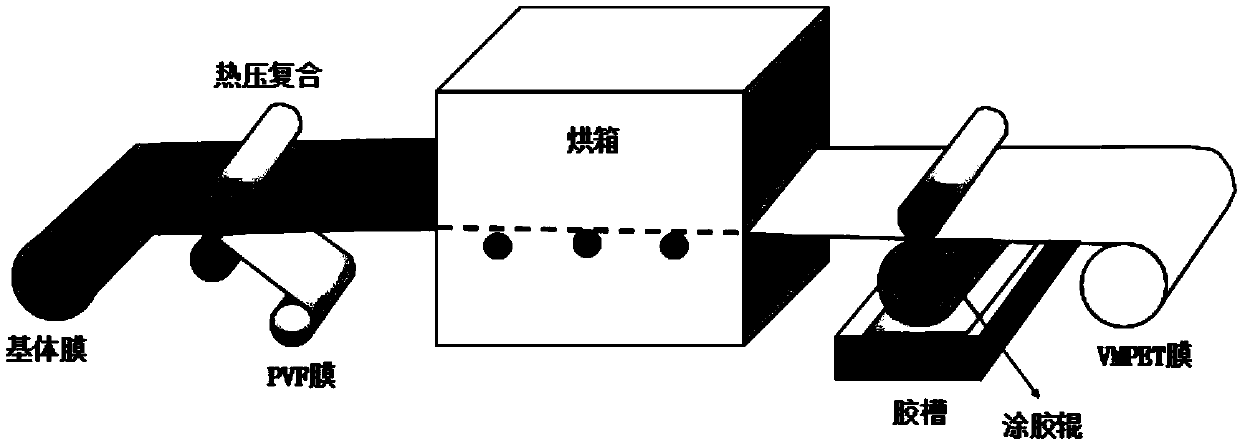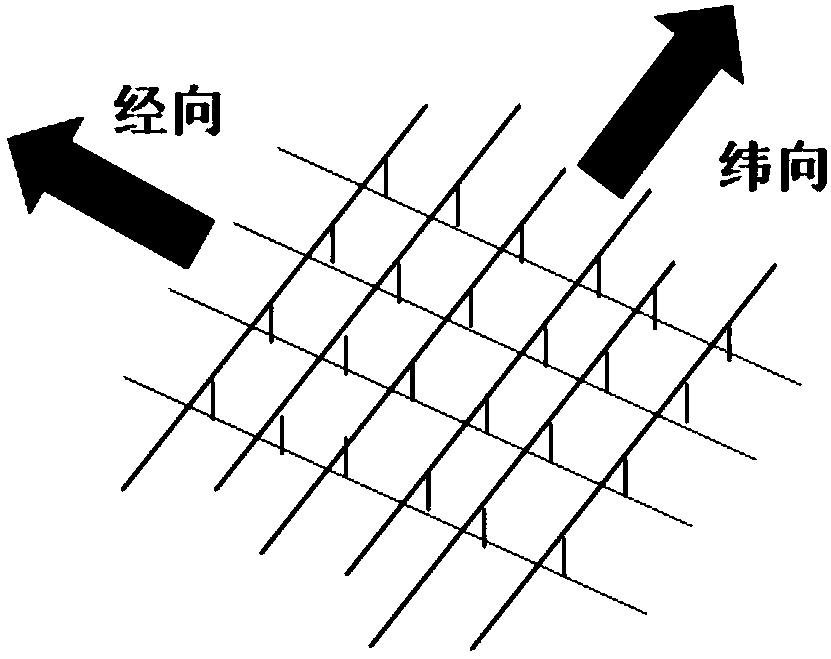Composite heat insulating material, and preparation method and application of composite heat insulating material
A technology of composite thermal insulation materials and polymer materials, applied in the field of thermal insulation materials, can solve the problems of low use temperature, poor thermal insulation effect, large thermal conductivity, etc., achieve good buffer performance and flame retardant performance, strong sealing and barrier properties, Considerable effect of mechanical properties
- Summary
- Abstract
- Description
- Claims
- Application Information
AI Technical Summary
Problems solved by technology
Method used
Image
Examples
Embodiment 1
[0037] see figure 1, this embodiment discloses a composite thermal insulation material, which includes an aluminum-plastic composite film, a polymer foam layer 2 and an air bubble pad 1 sequentially composited. Wherein, the aluminum-plastic composite film includes a base film 4 and nylon grid lines 3 compounded on the base film 4 . The base film 4 includes a PVF film 41 and a VMPET film 42 coated with aluminum on one side. The thickness of the VMPET film is 10-15 μm, and the thickness of the aluminum-coated layer 421 on the VMPET film 42 is 30-50 nm. The PVF film 41 is compounded on the PET surface of the VMPET film 42, and its thickness is 20-30 μm. The nylon grid lines 3 are composited on the aluminum-plated surface of the VMPET film 42, which are arranged in an orthogonal manner by nylon 66 yarns. The polymer foaming layer 2 is compounded on the nylon grid lines 3, and the polymer foaming layer 2 is composed of foamed plastics prepared from low-density polyethylene (LDPE)...
Embodiment 2
[0039] Embodiment 2: substrate film PVF / VMPET composite process
[0040] See attached figure 2 , this embodiment adopts RHGF-1000A type dry laminating machine to compound VMPET film and PVF film to prepare VMPET / PVF matrix film. The specific process is as follows:
[0041] (1) Glue dispensing: first pour the main agent of D5910A / B two-component adhesive into the glue dispensing barrel, start stirring slowly, increase the speed to 600r / min, then pour ethyl acetate solvent to dilute, and stir evenly for 30 minutes , add curing agent, stir while adding, after stirring again for 60 minutes, stop stirring, filter the obtained glue solution with a 250-mesh filter, let it stand for 60 minutes until the air bubbles are exhausted, and the viscosity is 10-30mPa·s and it is ready to use; The main agent: curing agent: solvent mass ratio in liquid configuration is 1:0.06:1.28.
[0042] (2) Substrate unwinding: place the VMPET film and PVF film to be compounded on the unwinding section r...
Embodiment 3
[0048] Example 3: Composite process of nylon grid lines and matrix film
[0049] Adhesive mixed with maleic acid modified vinyl resin and polyurethane is used for bonding and compounding nylon mesh and PVF / VMPET matrix film aluminum layer side, the content of maleic acid is 5wt%, the solid content of the glue is 22%, and the content of polyurethane is 8wt%.
[0050] A hot press is used to compound the nylon mesh reinforcement and the VMPET aluminum-coated surface. The specific process is as follows:
[0051] (1) Glue dispensing: first pour acetone into the glue dispensing barrel, start stirring slowly, then pour in the maleic acid modified vinyl acetate resin powder in proportion, set the stirring speed of the mixer to 800r / min until the resin is completely Disperse and dissolve. At this time, the glue is light yellow. After stirring evenly for 20 minutes, add LH-8505A / B polyurethane aluminum-plastic adhesive in proportion, continue stirring for 10 minutes and stop stirring. ...
PUM
| Property | Measurement | Unit |
|---|---|---|
| thickness | aaaaa | aaaaa |
| thickness | aaaaa | aaaaa |
| thickness | aaaaa | aaaaa |
Abstract
Description
Claims
Application Information
 Login to View More
Login to View More - R&D
- Intellectual Property
- Life Sciences
- Materials
- Tech Scout
- Unparalleled Data Quality
- Higher Quality Content
- 60% Fewer Hallucinations
Browse by: Latest US Patents, China's latest patents, Technical Efficacy Thesaurus, Application Domain, Technology Topic, Popular Technical Reports.
© 2025 PatSnap. All rights reserved.Legal|Privacy policy|Modern Slavery Act Transparency Statement|Sitemap|About US| Contact US: help@patsnap.com



